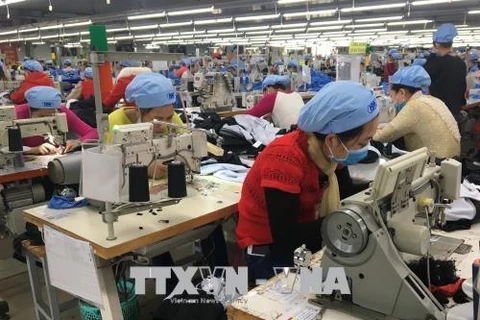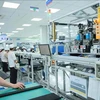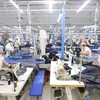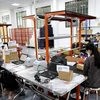Hanoi (VNA) – The footwear sector has optimised opportunities from free trade agreements (FTAs) that Vietnam has signed to increase exports, according to insiders.
Statistics from the Vietnam Leather, Footwear and Handbag Association (LEFASO) showed Vietnam’s footwear exports reached approximately 9 billion USD in the first half of 2019, a year-on-year increase of 14 percent.
Vice Chairman of the LEFASO Diep Thanh Kiet said as one of the world’s leading centres of footwear production and export, Vietnam attracts a lot of foreign investment in this field.
Secretary General of LEFASO Phan Thi Thanh Xuan said footwear started enjoying large tariff cuts right after the Comprehensive and Progressive Agreement for Trans-Pacific Partnership (CPTPP) took effect earlier this year.
Due to the deal, Vietnam’s footwear exports to other markets in the CPTPP are expected to increase by 10-15 percent in 2019, she said.
Particularly for Canada, up to 78 percent of Vietnam’s footwear exports to the market enjoy zero percent tariffs following the CPTPP’s enforcement and may reach 500 – 550 million USD in 2019, she added.
In the US, the removal of incentives for footwear exported from China and India is creating a competitive advantage for Vietnam’s footwear sector, she revealed.
Vietnam earned 16.2 billion USD from exporting footwear in 2018, including 12 billion USD grossed from the US, the EU and China.
According to the organisation World Footwear, in 2018, the US imported nearly 2.4 billion pairs of shoes worth 26.3 billion USD. Of which, Vietnam’s exports hit 5.7 billion USD, making up 22 percent of the US’s footwear imports, behind only China.
Escalating trade tensions between the US and China have shifted investment flows, with Vietnam now a target destination for some footwear manufacturers, Kiet said.
He said with confidence that factories which are manufacturing footwear to export to the US will come to Vietnam first, offering opportunities for Vietnamese firms to access various brands from the US as well as develop the footwear supporting industry.
According to the General Statistics Office, the US was the biggest export market of Vietnam with turnover of 22.6 billion USD in the first five months of 2019, up 28 percent against the same period last year.
At present, Vietnam is second after China in exporting footwear to the global market with more than one billion pairs of shoes annually.
Many experts have said that from now to 2025, Vietnam’s footwear sector is capable of competing with China in terms of labour cost and per capita income as well as economic policies and export markets.-VNA
VNA
























